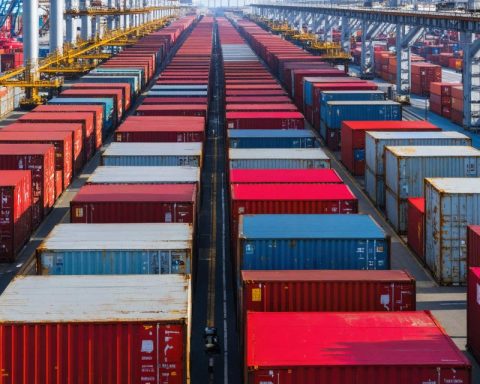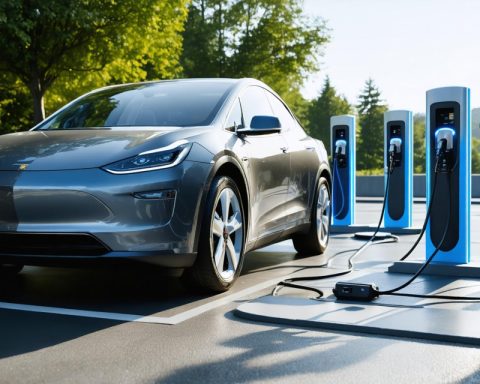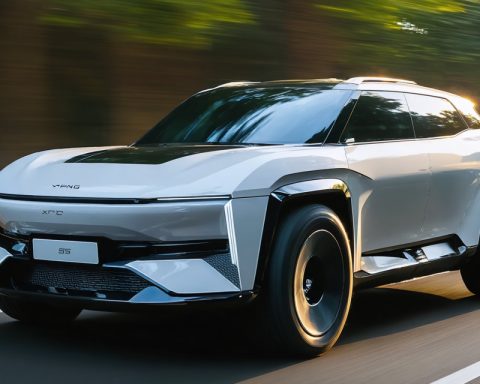- Airbus aims for a hydrogen-powered aircraft by 2035, but expects a 5-10 year delay due to significant technological challenges.
- Hydrogen fuel promises zero emissions, but requires complex and energy-intensive storage solutions, as liquid hydrogen takes up four times the space of traditional jet fuel.
- Current hydrogen production, largely from natural gas and coal, emits carbon dioxide; renewable-produced hydrogen remains costly.
- Airbus emphasizes the need for global collaboration to address technological barriers in hydrogen aviation.
- In the interim, the airline industry explores sustainable aviation fuel (SAF) to reduce emissions, using alternative sources to supplement traditional fuels.
- Sustainable fuels offer a pragmatic solution to lessen aviation’s carbon footprint while hydrogen technology matures.
Amid the buzz and promise of a greener aviation future, Airbus faces unforeseen turbulence. The European aviation giant had dazzled the world with visions of hydrogen-powered planes, promising a zero-emission aircraft by 2035. Yet, the reality is far from takeoff as complex hurdles demand attention. Observers now wonder if the skies will host these hydrogen marvels amid expectations of a five to ten-year delay.
Imagine an aircraft that leaves only water in its wake. Hydrogen motors offer this dream, expelling zero greenhouse gases. However, the journey to harness this revolutionary energy source is fraught with formidable obstacles. Transforming hydrogen from a gaseous state to a liquid requires chilling it to -253°C, a feat demanding significant energy. Even then, the liquid hydrogen occupies four times the space of traditional jet fuel, posing challenges for storage and transportation.
Moreover, the production of hydrogen remains a stumbling block. Currently, most hydrogen fuel is derived from natural gas or coal, processes that emit carbon dioxide. While renewable energy can produce cleaner hydrogen, the cost remains high. As Airbus strives to adjust its plans, it acknowledges the need for global collaboration to surmount these technological barriers.
The airline industry isn’t holding its breath. It turns to sustainable aviation fuel (SAF), a viable candidate for reducing emissions today. Using an eclectic mix of waste products, SAF supplements traditional jet fuel, paving a practical path toward greener skies.
While Airbus remains committed to hydrogen as an aviation game-changer, time and investment will tell if humanity can overcome these daunting obstacles. Meanwhile, sustainable fuels provide a lifeline, ensuring that the pursuit of reducing aviation’s carbon footprint continues unabated.
Will Hydrogen-Powered Planes Ever Take Off? Discover the Future of Aviation Now!
Industry Trends and Market Forecasts
In the aviation industry’s quest for sustainability, hydrogen-powered aircraft represent a bold new frontier. While the 2035 goal set by Airbus is ambitious, the timeline faces potential delays due to complex technical and production challenges. According to a report by the International Air Transport Association (IATA), the cumulative shift towards zero-emission aviation could lead the market to be worth approximately $3 trillion by 2050, with hydrogen playing a pivotal role.
Real-World Use Cases
Hydrogen technology is already finding applications in ground transport—think hydrogen fuel cell buses and trains. Similarly, the aviation sector is experimenting with hydrogen for short- to medium-haul flights. Companies like ZeroAvia have already conducted successful flight tests of hydrogen-powered prototypes, indicating that smaller, regional aircraft might wield hydrogen power sooner than their larger counterparts.
Controversies and Limitations
While the environmental promise of hydrogen is compelling, several controversies beset its development:
– Infrastructure: Developing global infrastructure for hydrogen production and distribution remains a significant hurdle. A comprehensive network of refueling stations and onboard fuel storage systems is needed for large-scale adoption.
– Sustainability of Production: The “gray hydrogen” derived from fossil fuels contributes to emissions, contradicting the primary goal of zero-emission flight. “Green hydrogen,” created using renewable resources, is costly and requires substantial energy input.
– Energy Intensity: The energy needed to liquify and transport hydrogen is another barrier. The low energy density compared to conventional jet fuels complicates its use for long-haul flights.
Reviews and Comparisons
In comparison to Sustainable Aviation Fuel (SAF), hydrogen presents a zero-emission solution. However, SAF has an immediate application advantage since it uses existing engine technologies and infrastructure, thus offering a practical intermediate solution. Airlines like United and Lufthansa are investing heavily in SAF, aiming for 5% of their fuel to be sustainable by 2025.
Security and Sustainability
Hydrogen fuel cells are stable in operation, but the storage and transport of liquid hydrogen carry potential risks due to its highly flammable nature. Additionally, the sustainability benefits hinge entirely on the source of electricity used in hydrogen production—only when renewable sources are prevalent can hydrogen reach its full green potential.
Pros and Cons Overview
Pros:
– Zero emissions at the point of use.
– Abundant natural availability as hydrogen is the most abundant element.
– Harnesses cutting-edge technology that stimulates innovation in the sector.
Cons:
– Expensive to produce sustainably.
– Complex technological and infrastructural requirements.
– Long timelines and uncertain returns on investment.
Actionable Recommendations
1. Invest in Research and Development: Companies should continue R&D to reduce the cost and increase the efficacy of green hydrogen production.
2. Infrastructure Enhancement: Governments and industry players must collaborate globally to establish hydrogen fueling infrastructure.
3. Adopt Hybrid Solutions: While hydrogen technology matures, investing in SAF and hybrid electric systems could provide immediate environmental benefits.
For those eager to learn more about the path to greener skies and how large firms are spearheading alternatives to combat climate change, consider exploring Airbus’s ongoing efforts at Airbus and how their innovations shape the future of aviation.
Embrace the journey towards a more sustainable future in aviation—a small step today can lead to giant leaps in cleaner travel tomorrow.















